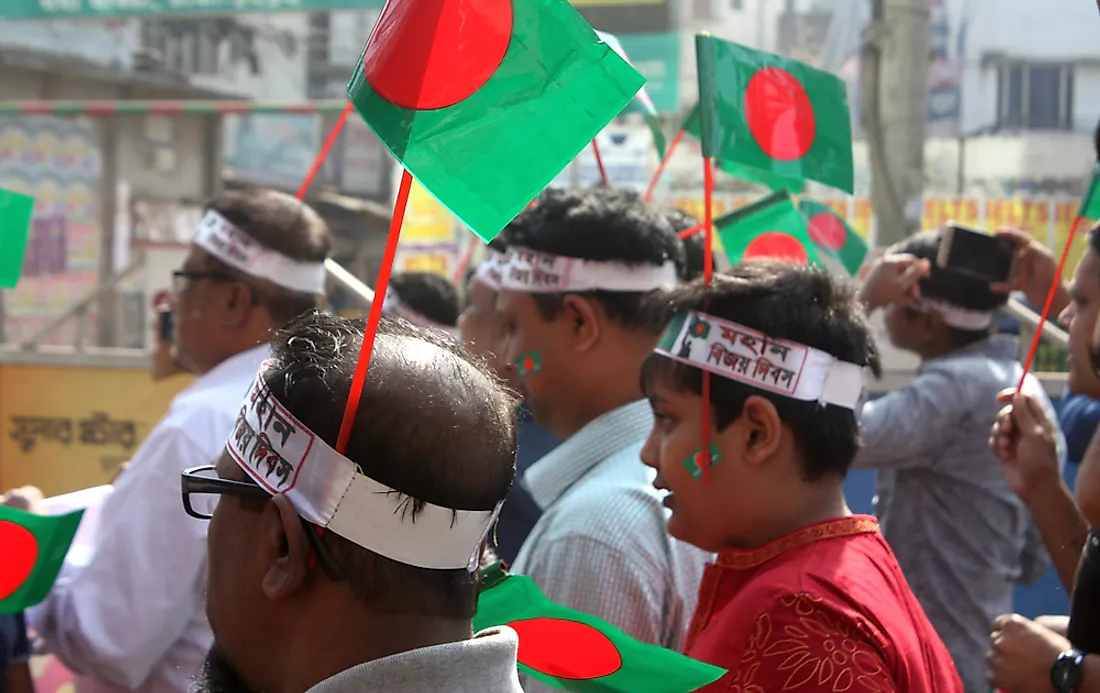Ethnic Groups In Bangladesh

Bangladesh is located in South Asia and bordered by the Bay of Bengal, India, and Myanmar. The country is the 8th most populous in the world with a population of 166.2 million. Its most widely practiced religion is Islam and Bengali is the official language, although different regions speak different dialects. The population of this country is nearly ethnically homogeneous, but some ethnic groups do live here in very small numbers. This article takes a look at the main ethnic group and some of the minorities as well.
Bengali
As previously mentioned, the population of Bangladesh is not very ethnically diverse. In fact, 98% of the people here identify as having Bengali ethnicity. The Bengali group is part of the larger Indo-Aryan ethnic group which is native to Bangladesh and West Bengal in India. They represent the third largest ethnic group in the world. Bengalis have contributed to literature, music, philosophy, architecture, and textile production since at least as early as the 4th Century BC. This group of individuals played a key role in the fight for the independence of India and eventually the independence of Bangladesh.
Bihari
Making up roughly .3% of the population is the Bihari ethnic group. Although this group speaks many languages, those living in Bangladesh tend to speak Hindi-Urdu. The Bihari descend from a long line of individuals who once made up the ancient kingdom of Magadha from which Jainism and Buddhism grew. The kingdom was later conquered by an Islamic empire and much later, British rule. In the 1940’s, Biharis participated widely in the movement for India’s independence. These individuals migrated from the east Indian state of Bihar to East Pakistan in 1947 during the division of the country. In December of 1971, East Pakistan became Bangladesh, and all of the Pakistani soldiers and civilians evacuated the area. The Bihari, however, were welcomed neither in Pakistan nor in Bangladesh. They had no legal protection for Pakistani citizenship and could not make their way back to Bihar state in India. The group remains “stateless” today, with roughly 600,000 living in 66 camps across Bangladesh. Some have managed to obtain Bangladeshi citizenship and still others have been permitted into Pakistan. Those born after 1971 have automatic Bangladeshi citizenship.
Chakma
Another .3% of the population is made up of the Chakma ethnic group. They mainly populate the Chittagong Hill Tracts, a hilly area in the southeast region of the country. Within this region, the Chakma make up half of the population and divide themselves into 46 family clans. The majority of this ethnic group practices Theravada Buddhism and speaks the Chakma language which has been influenced by the Chittagonian language which is related to the Assamese language. They share a unique culture and customs that are markedly dissimilar to those held by other ethnic groups.
Meitei
The Meitei make up a very small percentage of the Bangladeshi population, comprising only 0.1%. They are also divided into several family clans and a larger population of Meitei live in Manipur in northeastern India. Their language, Meithei, comes from the Tibeto-Burman language family. In Bangladesh, the majority of the Meitei live in the Sylhet district. Common economic activities among the Meitei include the farming of oranges, tobacco, sugarcane, pineapple, and rice. Hinduism is their most practiced religion.
Other Ethnic Groups
Other minority ethnic groups living in Bangladesh, making up around 0.1% of the population each, include Khasi, Santhal, Garo, Oraon, Munda, and Rohingya.
Ethnic Groups In Bangladesh
| Rank | Ethnic Group | Share of Bangladeshi Population |
|---|---|---|
| 1 | Bengali | 98.0% |
| 2 | Bihari | 0.3% |
| 3 | Chakma | 0.3% |
| 4 | Meitei | 0.1% |
| 5 | Khasi | 0.1% |
| 6 | Santhal | 0.1% |
| 7 | Garo | 0.1% |
| 8 | Oraon | 0.1% |
| 9 | Munda | 0.1% |
| 10 | Rohingya | 0.1% |











